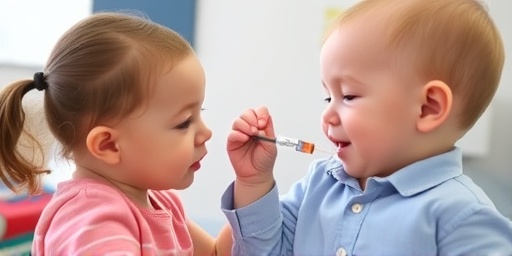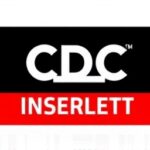Washington, DC – The Centers for Disease Control and Prevention (CDC) has issued an urgent alert as respiratory syncytial virus (RSV) hospitalizations among US children under 5 skyrocket, with cases surging by over 60% in recent weeks compared to last year. Health officials are warning parents to stay vigilant during this peak season, emphasizing timely vaccinations for eligible infants to curb the crisis.
According to the latest CDC data released Tuesday, more than 14,000 children under 5 were hospitalized for RSV in the past month alone, marking one of the most severe seasons in years. This alarming trend has prompted the agency to ramp up public awareness campaigns, urging immediate action to protect vulnerable toddlers and babies from severe complications like pneumonia and bronchiolitis.
RSV Hospitalizations Climb 60% Nationwide in Young Children
The CDC’s Respiratory Virus Hospitalization Surveillance Network (RSV-NET) is tracking a dramatic uptick in RSV activity across 14 states, with hospitalizations for children under 5 jumping from 2.5 per 100,000 people in early October to over 4.1 per 100,000 by mid-November. This surge is particularly acute in infants under 6 months, where rates have doubled in some regions.
Dr. Fiona Havers, a CDC epidemiologist, stated in a press briefing, “We’re seeing RSV circulate earlier and more intensely than in previous seasons, overwhelming pediatric wards. Parents need to act now to prevent their little ones from ending up in the hospital.” The data underscores the virus’s toll: RSV is the leading cause of hospitalization in US children under 1 year old, contributing to approximately 58,000 hospitalizations and 500-600 deaths annually in this age group.
Experts attribute the spike to a “triple threat” of respiratory illnesses – RSV, influenza, and COVID-19 – circulating simultaneously. Wastewater surveillance from the CDC shows RSV viral loads at record highs in 70% of monitored communities, signaling the peak of the season has arrived ahead of schedule.
Symptoms Parents Should Monitor Closely This RSV Season
RSV typically presents with mild cold-like symptoms in older children and adults, but it can escalate rapidly in young kids. The CDC is advising parents to watch for key warning signs that warrant immediate medical attention:
- Difficulty breathing: Rapid or labored breathing, wheezing, or chest retractions.
- High fever: Persistent fever over 100.4°F (38°C) in infants under 3 months.
- Dehydration cues: Fewer wet diapers, dry mouth, or lethargy.
- Bluish skin color: Around lips or nails, indicating low oxygen levels.
- Irritability or poor feeding: Refusal to eat or unusual fussiness.
“RSV can go from sniffles to serious in hours,” warns pediatrician Dr. Sarah Thompson from Children’s National Hospital. “If your child under 5 shows any of these, head to the ER – don’t wait.” Early detection is critical, as most healthy children recover at home with supportive care like hydration and fever reducers, but high-risk groups face steeper odds.
Comorbidities amplify the danger: Children with prematurity, congenital heart disease, or chronic lung conditions are up to 10 times more likely to require hospitalization. The CDC reports that 80% of this season’s severe cases involve kids under 2 years old.
CDC Pushes RSV Vaccination for Infants and Pregnant Mothers
In response to the surge, the CDC is doubling down on vaccination recommendations. Two FDA-approved options are now front-line defenses: nirsevimab (Beyfortus), a monoclonal antibody shot for infants under 8 months entering their first RSV season, and Abrysvo, an RSV vaccine for pregnant individuals at 32-36 weeks gestation to protect newborns via maternal antibodies.
Clinical trials showed nirsevimab reduces hospitalizations by 70-80% in healthy infants and up to 90% in high-risk preemies. “Vaccination is our most powerful tool,” CDC Director Dr. Mandy Cohen emphasized. “We’re urging pediatricians to prioritize shots now, before holiday gatherings spread the virus further.”
- Eligibility for nirsevimab: All infants under 8 months born during or entering RSV season (October-March); second dose for high-risk kids up to 24 months.
- Maternal vaccination: Pregnant women 32-36 weeks from September to January.
- Access points: Pediatric clinics, pharmacies like CVS and Walgreens; covered by most insurance, including Medicaid.
Supply chain improvements have addressed last year’s shortages, with over 1 million doses of nirsevimab distributed nationwide. However, vaccination rates lag: Only 20% of eligible pregnant women received Abrysvo last season, per CDC estimates, leaving millions of newborns unprotected.
Regional Hotspots Strain Pediatric Hospitals
RSV hotspots are emerging coast-to-coast. In the Southeast, Florida and Georgia report the highest per-capita hospitalizations, with Miami-Dade County seeing a 75% week-over-week increase. Midwestern states like Ohio and Illinois are next, where RSV test positivity hit 25% in emergency departments.
The Northeast, including New York and Massachusetts, faces capacity crunches: Boston Children’s Hospital diverted ambulances last week amid a 40% bed occupancy spike from RSV cases. Western states aren’t spared; California’s RSV-NET sites log 3,500 hospitalizations since September.
Table of key stats (CDC RSV-NET, Week 45 2023):
| Region | Hospitalizations per 100k Children <5 | Week-over-Week Change |
|---|---|---|
| Southeast | 5.2 | +65% |
| Midwest | 4.8 | +55% |
| Northeast | 4.0 | +45% |
| West | 3.5 | +50% |
Hospitals are implementing RSV-specific protocols, including separate wards and rapid testing, but experts warn of a “perfect storm” if flu vaccinations falter too.
Expert Strategies to Shield Children from RSV Spread
Beyond vaccination, the CDC and American Academy of Pediatrics (AAP) offer proven prevention tactics tailored for families:
- Hand hygiene first: Wash hands for 20 seconds; use sanitizer with 60% alcohol.
- Avoid crowds: Skip packed indoor events; opt for outdoor playdates.
- Clean surfaces: Disinfect toys and high-touch areas daily with EPA-approved products.
- Mask up high-risk: Caregivers of infants should wear masks in public.
- Breastfeed if possible: Antibodies reduce RSV severity by 50% in breastfed infants.
Dr. Yvonne Maldonado, Stanford pediatric infectious disease specialist, adds, “Simple habits like not sharing cups or pacifiers can slash transmission by 40%. Combine this with vaccination for near-total protection.”
Schools and daycares are key vectors: AAP recommends excluding sick children for 7-10 days post-symptoms. Telehealth surges have helped, with 30% of RSV consults now virtual, easing ER burdens.
Looking ahead, the CDC anticipates RSV circulation through May 2024, with potential second waves in summer for preemies. Federal funding via the $1.2 billion RSV preparedness initiative will expand monoclonal antibody access, targeting 90% coverage by next season. Public health campaigns, including PSAs on social media and partnerships with retailers like Target for on-site vaccinations, aim to boost uptake.
As families gear up for holidays, experts stress preparation: Stock up on saline drops, bulb syringes, and humidifiers. With proactive steps, the CDC hopes to flatten the hospitalization curve and spare thousands of children from RSV’s grip this winter.









